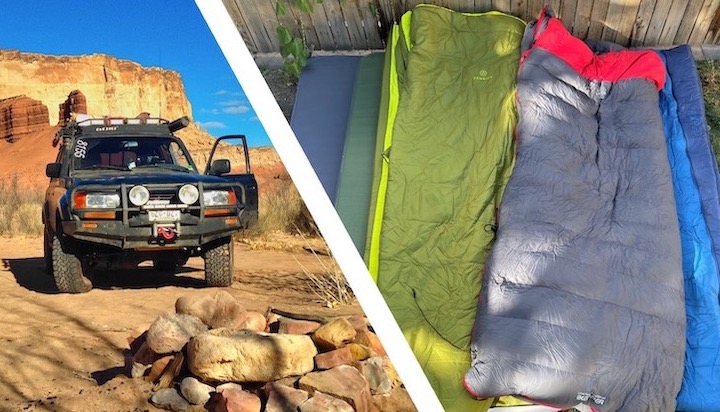We have had a chance to spend time with several sleep systems. We have used them in a variety of conditions. We’ll discuss them to help you decide.
The items discussed here were provided by the manufacturer, a marketing person, or a distributor.
Everything reviewed has been used by us in the field. Like you the first use is at home – can’t resist – but after that it’s the Utah desert, Colorado mountains, a farm in Wyoming, a beach in Nebraska, and a two-week trip to the Pacific Northwest. Overland travelers have the space to carry a more comfortable – albeit bulkier – mattress. With current offerings on the market, camping nights can be more comfortable than home.

Offerings from ZenBivy, iKamper, Exped, Ignik, and Born Outdoor raise the bar. All benefit from newer materials and designs. Flexibility allow us to be prepared for a range of temperatures. A single trip can take us to hot, cold, and in-between. Here in Colorado it will dip into the 30’s most every summer night. The last week of April in the Utah desert we had overnight frosts. We also camp in the desert midwinter where 5 degrees is not unusual.
Products are purpose designed for vehicle-based adventure travel. Double bags are great for two. Quilts supplement a sleeping bag on cold nights and function alone on warmer ones. With vehicles we can carry heavier and more comfortable mattresses. A few extra pounds is irrelevant. Packed size matters, but not as much.
With that in mind, we have been trying a few different systems and combinations of systems the past year.
The Zenbivy MotoBed

The Zenbivy MotoBed is different than any other sleeping bag, or mattress, or combination I have ever used. It works.
The Zenbivy MotoBed is an all-in-one sleeping bag, quilt, and two-part air / foam mattress. The sleeping bag /quilt zips to the mattress cover and is reconfigured with zippers and cords.
The dual-layer mattress is comfortable. A foam layer tops an air pad. Mine arrived with air above foam, so check yours. Removing and replacing the cover to put the foam above the air was easy. It was practice for removing the sleeve for washing. You can opt to use just the air or just the foam if you like. The cover is washable.
Attached to the mattress sleeve/cover is the head and arm area of the bag. The hood keeps your hands and arms warm, especially if you sleep, as I do, with arms crossed above or under your head. The hood being attached to the mattress cover offers a unique feature. To keep my head warm I can slide further up and get my head under the hood.

The top quilt / sleeping bag can be configured in all the multiple ways Zenbivy claims on their website. Fully zipped and cinched, it is a mummy bag from the waist down with generous torso and shoulder room. Slightly opened it’s a square bag. Fully opened it’s a quilt.
With a Limit Rating of 35°F (2°C) and Comfort Rating of 45°F (7°C) this won’t be my winter camping first choice, but I will try it at least once, having a warmer bag nearby for backup. I suspect a quilt on top will make it plenty warm.
The insulation is synthetic. A cost conscious choice where lightweight and packability of down is not as necessary. Zenbivy calls its material “1d/3d polyester synthetic blend that is as soft as it gets. Vegan friendly and built for tighter budgets.”
The system includes a soft pillowcase from Zenbivy’s “polyester Pongee fabric.” It will fit a regular pillow, but I still prefer to fill it with a towel or puffy jacket.
Breathability was excellent. On several nights, the temperatures was at or below freezing. The outside of the tent was heavy with morning dew. I expected condensation on the top of the Moto bed, but there was none.
A few cons:
- Cannot zip two together. This a one-person rig.
- Bright colors will show dirt.
- G-hooks on the end of the packing strap made a mess of the strap. I’d rather see two regular dual-adjustable plastic side release buckles.
- The air valve tends to sink into the sheet, a minor inconvenience.
Zenbivy has a legitimate outdoor entrepreneur at its helm. Founder Michael Glavin has a long history in the outdoor gear industry. Mike is on record saying he is “selling the idea of beds, not sleeping bags.” The original Zenbivy Bed was on Kickstarter in 2017. The Moto-Bed is new.
Source: https://zenbivy.com/products/motobed
iKamper RTT Sleeper, RTT Blanket, and RTT Comfort mattress
I was familiar with iKamper from rooftop tents (“RTT’s”). I was intrigued by the iKamper Aioks kitchen system when I saw it at Outdoor Retailer, but I still have yet to lay hands on one. When the opportunity arose to test the iKamper RTT Sleeper and RTT Blanket I said, “thanks, but I don’t have an RTT.” They said, try it anyway.

I have slept on the RTT Comfort 7850 mattress in a ground tent and in a small pop-up trailer. It served well in both settings. It excels in terms of inflation and deflation, featuring no less than 5 reversible inflation / deflation ports, with #5 being ON TOP so you don’t have to reach into the side of a mattress jammed into a tent corner and pull it up to access the valve.
RTT Comfort mattresses are sized for particular iKamper RTTs so you will find unique sizes that allow you to find the perfect fit for your setup. The RTT Comfort 7850 is a generous 78" x 50". That’s almost as wide as a “full” sized mattress (53”) and almost as long as a Queen (80”)
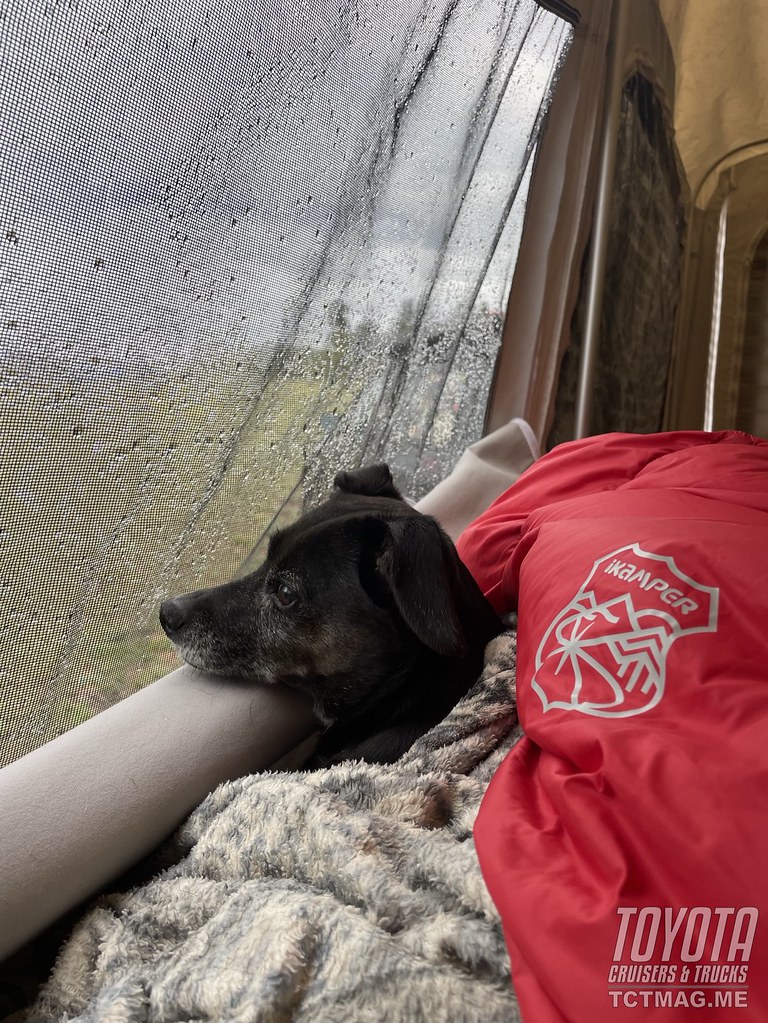
The RTT Sleeper sleeping bag system is rectangular shape, with 60% of the fill in the top portion of the bag. We have used traditional sleeping bags with full insulation top and bottom and systems that have all the insulation on top. 60/40 is probably a good balance. We have found we like a bit of insulation on the underside.
The RTT Sleeper sleeping bag incorporates many of the latest design features from premium camping quilt and sleeping bag designs. Two drawstrings allow you to cinch the footbox and midsection into a near mummy shape.
Something we have never seen before and instantly liked is the quilt attaches inside the sleeping bag. This puts the additional down insulation where you need it most, reduces cold air space, and eliminates the possibility of it sliding off.
The fabric has a nice feel and great breathability.
The inside pocket will fit a phone and headlamp overnight, and earplugs and a eye mask when stored.
The RTT Sleeper sleeping bag is rated to 25°F with 1,000g fill weight of 90/10, White Duck Down/Feather ratio. 60% of the down is in the top of the bag. The RTT Blanket is 700g fill weight of 90/10, White Duck Down/Feather ratio.
The system is rated to 10°F on the Sleeper page and 0°F on the Blanket page. “iKamper uses Responsible Down Standard (RDS) certified duck down, ensuring the down you use is ethically sourced. Throughout the entire production chain, the feather collection process is free of animal treatments that cause pain, suffering, or stress.” Source: www.ikamper.com/products/rtt-blanket/
https://ikamper.com/products/rtt-sleeper
Exped MegaMat Duo 10 and Exped Mega Sleep Duo 25 two-person sleeping bag / quilt
I did not have to be asked twice to review at an Exped MegaMat. I was familiar with them. I have read plenty of reviews. I was content with my existing pad and not incentivized to buy another. Now that I have it, it’s not yet another camping pad. It’s a proper mattress. I’ll never backpack it like a single pad, but I’d use it everywhere else.

The model we have is the MegaMat Duo 10. It measures at a generous 78 inches long, 52 inches wide, and 3.9 inches thick. We recently used it on a 2 week roadtrip from Denver to Seattle in LongCruiser (IG @LongCruiser). It fit perfectly across the sofa/lounge with some support underneath.
A highly desirable feature of the MegaMat Duo is the 9.5 R-value insulation. You don’t realize until you have a cold night just how much heat you can lose to the ground.
The MegaMat Duo comes with the “sidewinder stuff sack.” It’s oversized opening and roll-up closure makes the mat easy to store and transport.
For an added touch of comfort and fun, we topped the MegaMat with the Cozy Sheet Cover.
Keeping us comfortable on top was the Mega Sleep Duo 25 two-person sleeping bag / quilt.
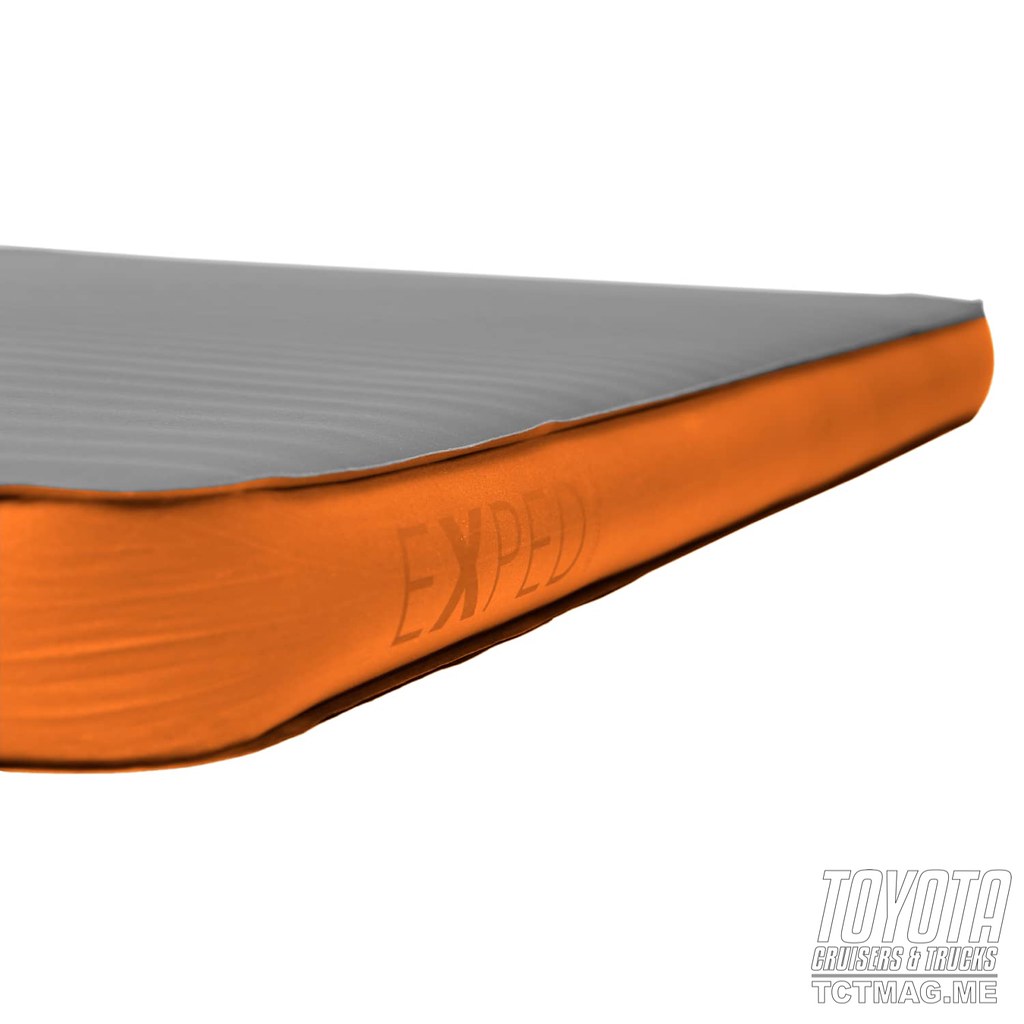
The Mega Sleep Duo 25 boasts 4 in 1 versatility and we tried all the configurations. It features a “warm side” and a “cool side”. Exped said it well: “Simply flip the bag over to change the amount of insulation on the top side - dark blue side up for cool nights (down to 25°F), light blue side up for warm nights (down to 40°F). Additionally, each side can be converted into a solo bag or blanket, creating one for cool nights and one for warm nights.” The 5th is to use the entire bag, all zipped, as one quilt so you are under both layers. You can also fully un-zip and have two separate quilts. It’s a versatile piece of kit. Synthetic insulation keeps the price point down. It is lightweight and warm.
Source:
https://www.exped.com/en/products/sleeping-mats/megamat-duo-10
https://www.exped.com/en/products/sleepingbags/mega-sleep-duo-25
The Ignik Heated Sleeping Bag Liner
The scene: you have access to 12V or USB power while camping and want that extra margin of warmth. Maybe you or your significant other want to be pampered, adding the Ignik Heated Sleeping Bag Liner is sure to make someone go “ohhhhh.”
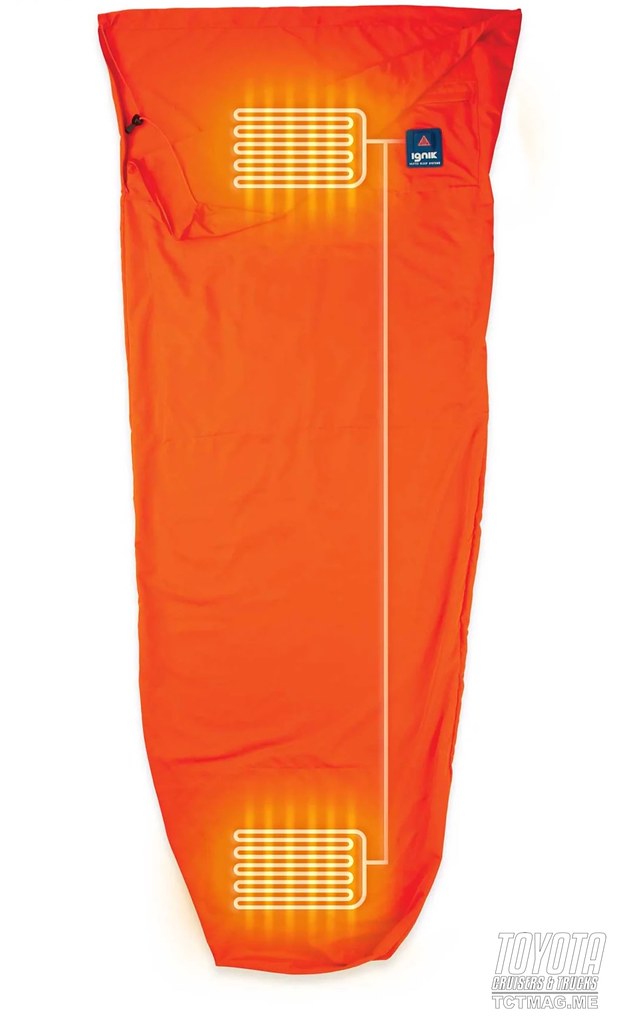
I have a heated mattress pad at home. My house is older and the floors and walls can be chilly. Getting into a cold bed at home is no different than getting into a cold sleeping bag at camp.
Best use: that person you want to take camping with you but is afraid they will be cold. Second best use: when you end up camping solo and want to tell that person how comfortable you were.

Source: Ignik.com
Coda: The Born Badger Bed
I happened upon the Born Badger Bed at Overland Expo Mountain West. It was one of many chance conversations that happen when thousands of enthusiasts gather. This article was already in the works. After a visit with Stuart Born, arrangements were made for me to spend a night in a Badger Bed.
I was not around when the bed was dropped off at LongCruiser. I preferred it this way so I could take my time setting up and getting familiar.
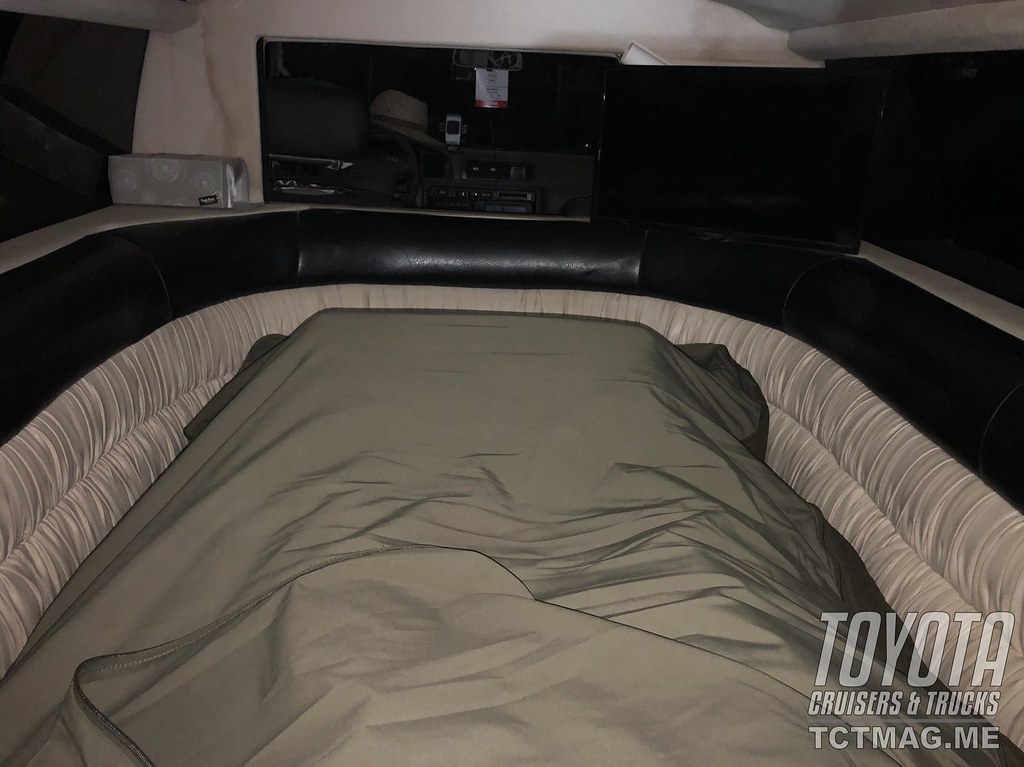
The Badger Bed is something you don’t know you need until you try it. In your bed at home you sleep on sheets, on a mattress, under a blanket. In a sleeping bag you can zip up on your right or your left. With most camping setups you unroll and inflate your camping mattress at night and deflate and roll it up in the morning.
With the Badger bed you sleep on sheets, on a mattress, under a blanket. You can zip on your right, your left, or both. You get to camp, unroll and inflate your camping mattress and deflate and roll it up in the morning.
The Born Outdoor Badger Bed Bundle includes the bed, quilt, sheets, and a Therm-a-Rest mattress. Components can be purchased separately.
The “bed” is a bedroll-type setup. The bottom and 5” tall soft-structured sides are made from a “postconsumer recycled 600 denier poly oxford ripstop fabric” with DWR (Durable Water Repellent) coating. The top layer is a “210 denier nylon oxford fabric with two-way stretch.” In my experience with the top layer fully zipped on three sides it was no more restrictive than a typical sleeping bag. Think of how a “bed” zipped on all sides has the potential to feel like a tightly tucked in hotel bed. Compare this to a sleeping bag or quilt that moves freely. The Badger bed is comfortably in between.
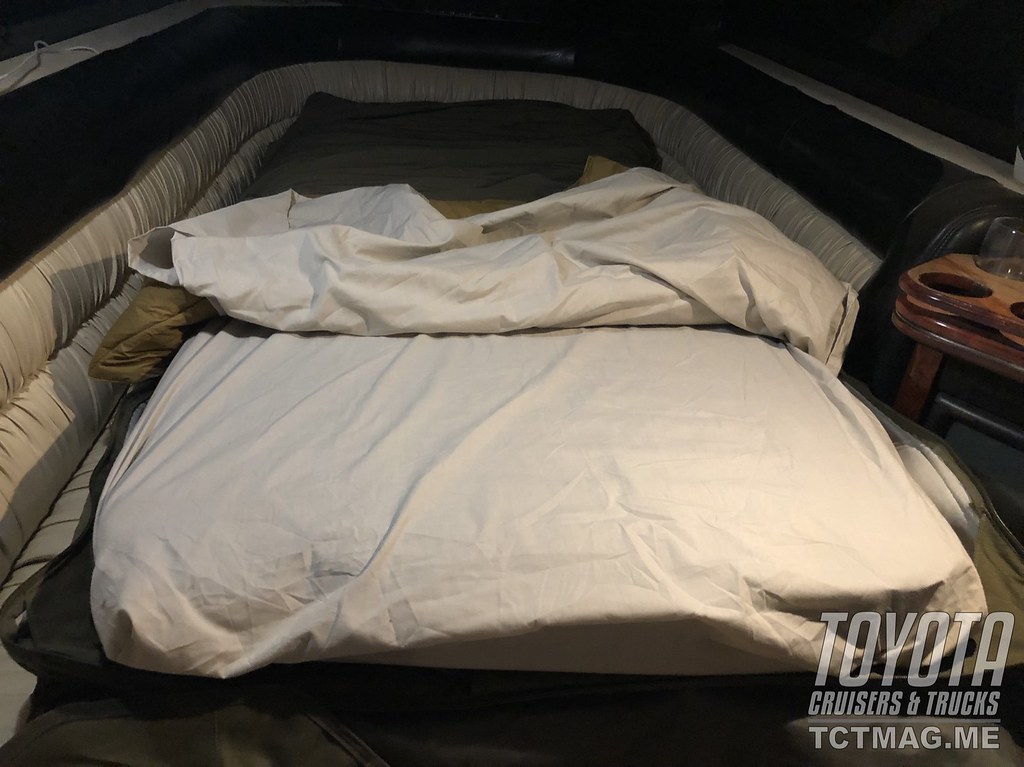
Sleeping on normal sheets is a huge improvement over the best nylon sleeping bag inner. Since you will be in or close to your vehicle, you can manage the extra bulk. The bottom sheet is fitted and the top sheet is retained with a clever loop and snap system.
I was provided the Baja Quilt, “a three-season synthetic insulation quilt.” The Baja Quilt was plenty warm for the 50-ish degree Colorado Front Range summer night. For colder nights there is the available Sierra Down quilt with 600 fill down. It would be easy to layer more than one quilt under the top cover.
The quilt uses the same clever loop and snap system as the top sheet to stay in position whether the bed is zipped or open.
One drawback applies to sleepers who tuck their arms under their heads. There is no built-in hood as you find on most colder weather sleeping bags.
The outer bed construction is durable enough to lay directly on the ground like a bedroll. A ground sheet is always a good idea for increased moisture protection and to protect your investment.
Convenient pockets provide nighttime storage (think phone, flashlight, and eyeglasses (in a case of course). An optional duffel is available.
In the morning all you do is open the mattress deflation valve and roll the bed up. While bulky, it’s really not going to take up much if any more space then separate mattress and sleeping bag while providing a completely different sleep experience.
Source: https://www.bornoutdoor.com/store/p/badger-bed-30


